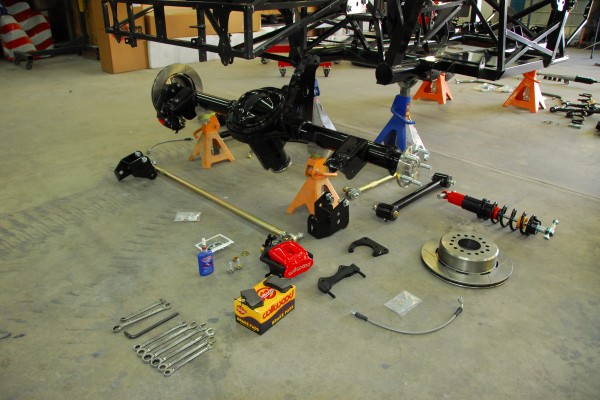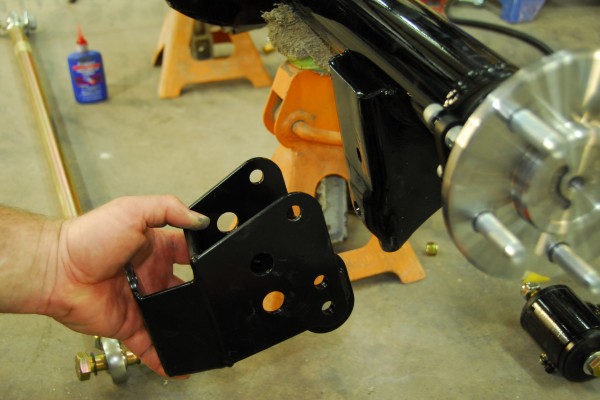In our first installment on Summit Racing’s Cobra Project, we covered in general the scope of the buildup, and then got down to the details on installing the front suspension and steering rack. With the front end basically done (except for brake lines and alignment, which we’ll cover later), we next proceeded with assembling the rear-end.
First, though, we should point out that Factory Five Racing (FFR) offers three different setups: four-link, independent, and three-link. About a third of all Factory Five Racing (FFR) roadsters use the standard four-link, which is well suited for solid street performance. It’s the most affordable choice, since it’s fitted with a Mustang 8.8-inch live axle and related suspension parts sourced from a used donor vehicle. (FFR also offers new 8.8-inch Ford rear-ends with Mustang brake kits.)
On the other hand, the independent rear suspension (IRS) option is a more exclusive choice, as it features a welded-in cage and custom assembled axles and CV joints. An IRS setup generally performs better on uneven pavement and tight turns, but doesn’t hook up as well as a live-axle on straight-line acceleration. The IRS on the Mk4 kit employs an 8.8-inch center section from a 1989-1997 Ford Thunderbird, plus rear spindles and brakes.
FFR’s three-link rearend is the most popular for a couple reasons and is the one used on this Summit Racing buildup project. The Mk4 complete kit consists of all-new parts, saving time over chasing down parts from a Mustang donor vehicle, since the frame brackets, Panhard rod, tubular control arms, and coil-over shocks are included. Used on FFR Challenge Series cars, its performance is better as well since the tubular control arms are stronger and lighter. Also, the transverse Panhard rod stabilizes the rear-end, eliminating binding on the upper control arms under hard cornering or acceleratio and providing smooth, predictable handling on both the track and street.
For our upcoming installments, we’ll be focusing on assembly of Ford’s 427 Stroker engine, along with body prep and finishing off the interior. For now, you can check out how the rear suspension came together in the slide show above.














scott julie
[…] Components Summit Racing/Factory Five Mk4 Kits Mk4 Build (Part 1): Front Suspension and Steering Mk4 Build (Part 2): Rear Suspension Mk4 Build (Part 3): Engine and […]
my poor old brain is confused! having trouble getting the 3rd link brackets in the right places………the pictures aren’t helping yet…….